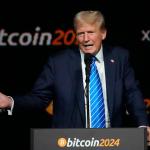In recent developments, former President Donald Trump has decided to cut short his visit to the G7 summit, stating intentions to refocus on Middle Eastern matters, especially following a significant recent deal with British opposition leader Keir Starmer. His decision comes at a pivotal moment when world leaders are gathering to discuss pressing global issues, making his early departure notable.
This year’s G7 summit has caught attention not just for the discussions scheduled among major world leaders, but also for the nuances of international relations that are at play. The G7, comprising Canada, France, Germany, Italy, Japan, the United Kingdom, and the United States, often serves as a platform for fostering collaboration among these influential nations. However, with Trump cutting his visit short, the dynamics of the summit might shift in unforeseen ways.
The “family photo” moment remains a highlight of any G7 meeting. This quintessential event often showcases the unity—or sometimes the discord—among the leaders, typically against a striking backdrop. Last year, for instance, the iconic image of Pope Francis participating in the group photograph was historic and memorable. Such photos can encapsulate the essence of the summit, serving as lasting reminders of the interactions and the atmosphere shared by world leaders at that moment in time.
Given Trump’s preference for strong posturing on trade and foreign relations, the 2018 G7 summit still resonates in public memory, where body language and facial expressions among leaders spoke volumes. At that time, Trump’s demeanor, marked by crossed arms surrounded by leaders like Angela Merkel and Emmanuel Macron, illustrated the undercurrents of tension and challenge facing the group. It was a stark contrast from the friendly smiles that often characterize the family photo, highlighting the complexities inherent in international dialogues.
As we await this year’s rendition of the family photo, it will be intriguing to observe the leaders’ body language, their order in the lineup, and the framing of this moment. Each small detail can reveal insights into the relationships and alliances—or the lack thereof—that influence discussions.
Critics of Trump might argue that his focus on Middle Eastern engagements, particularly at this time, signals a diversion from critical issues that could benefit from collective global input. The reverberations of such a decision can alter perceptions about United States’ commitment to a multilateral approach in addressing global challenges.
On the other hand, Trump’s signal to prioritize the Middle East might reflect his administration’s long-term strategizing, catering to interests or alliances he perceives as vital. This comes amid ongoing conflicts and diplomatic shifts in the region that warrant attention and action.
Starmer’s involvement in the deal adds an intriguing layer to the story. His leadership, while representing a different political landscape in the UK, aligns with discussions on global governance and how nations can tackle shared concerns—not limited to climate change, economic recovery, and security. With Trump’s cutting short of his G7 visit, alongside Starmer’s engagement, we may see a realignment of perspectives regarding international collaboration.
The gathering of these leaders, even with the absence of Trump for part of the summit, still fosters an environment for dialogue. Global cooperation is essential, especially as nations face similar dilemmas stemming from economic uncertainty and geopolitical tensions. Each leader, armed with their own agendas and diplomatic styles, contributes to a larger narrative on how the world is coalescing around challenges that transcend borders.
Watching the live-streamed family photo will allow viewers to gauge the atmosphere among these leaders and perceive the potential outcomes of their discussions. This visual representation of unity (or disunity) has consequences extending far beyond a mere photograph, encapsulating the intricacies of international relations that underpin global governance in uncertain times.
As key geopolitical issues unfold, much attention will be paid to how leaders choose to engage, both publicly and behind closed doors. Understanding the implications of Trump’s shortened G7 visit, especially with his eyes focused on the Middle East and the recent deal with Starmer, invites us to contemplate the evolving landscape of world politics.
Ultimately, with a variety of pressing global issues at hand, this G7 summit is a critical opportunity for leaders to either reinforce collaborative efforts or expose the fractures within the international community. Each family’s picture is more than just a staged display; it is a window into the dynamics of world power and what may come next in our increasingly interconnected world.
Source link










